
Colombia’s Only Travel Guide You Need For A Great Trip in 11 Easy Steps
- Destinations Americas
Cruisit Team
- July 15, 2022
- 0
- 4786
- 84 minutes read
Colombia’s Background
An advanced indigenous civilization with communities like Chibchas, sub-Andean, and subsequently invading Caribs when the Spaniards first arrived in Colombia. The Spanish empire entered Colombia in 1525 establishing Santa Marta, followed by Cartagena in 1533 and Bogota in 1538, with almost all colonial cities constructed by 1539.Colombia’s indigenous population was exploited by the Spanish crown from the early 16th century until the 17th century, when it was part of the Viceroyalty of New Granada which also included Panama, Venezuela, and Ecuador known as Gran Colombia. After the French invasion of Spain in 1808, there was an outpouring of uprisings, particularly in Bogota (remembered as Colombia’s Independence Day), and a succession of civil conflicts. Between 1840 to 1903, the nation was wrecked by a brutal revolution and terrible conflict.
Colombia was one of the nations that emerged from Gran Colombia’s fall in 1830. During the 1990s, a 40-year rebel struggle to destroy Colombia’s government accelerated, fueled in part by funding from the drug trade that had wrecked the country for years. Despite the fact that the violence was unsafe and that wide areas of the countryside were under guerilla control, the movement lacked the military power and public support required to overturn the government. In recent years, an anti-insurgent force of paramilitaries has developed to several thousand strong, battling the insurgents for control of territory and the drug trade, as well as the government’s capacity to exercise authority over rural regions. Bogota intensified attempts to reestablish government authority across the country when neighboring countries were concerned about the bloodshed spilling over their borders.
That being said, It’s difficult to find a country that has never been colonized or had any civil or colonial battles, and as a result, all countries in the globe have had some form of bleak past filled with either domestic warfare or foreign intrusion by colonizing nations. Nonetheless, a country is considered resilient when it always gets back on its feet, and most countries throughout the world have done so, and Colombia is doing it in a big way lately. The country of Colombia has finally opened up to the rest of the world like never before since the end of its decades-long civil war with the FARC guerrillas in 2016 but not too many people know that.
If you want to visit Colombia but aren’t sure what you’ll need to know about getting there (or travelling around the nation), this Cruisit article will help you. If, on the other hand, you’re not sure why you should travel to Colombia in the near future, this is the travel blog for you.
Located in northern South America, Colombia controls the border between Central America and South America. It also has a shoreline on both the Caribbean and Pacific oceans. Colombia is an extremely diversified location with a wide diversity of landscapes, cultures, and tourist attractions. Beginning in Bogota, you may go on an adventure rich in art, architecture, gastronomy, and shopping. You may go for one or two hours in nearly any direction from there and find yourself in a different scenery and climate, much like Mexico.
“Colombia, a civilization with its importance firmly instilled in the past and a deep and sometimes dark history dating back thousands of years. With diversity seen in shades of all colors and scenery ranging snow-capped volcanos to dense forests.“
Coffee is one of the most significant exports, and maybe the most popular in the world. Colombian coffee is famous for its rich flavor, which is due in part to the volcanic soil found in this region immediately west of and near to the Andes. But, that is not reason enough for someone hesitant to go to Colombia, so, read ahead.
Colombia will lead you to classic historical places in a country that has recently gained its reputation as a totally diversified paradise and one of the greatest South American countries to visit. With its warm smiles and its priceless Pacific and Caribbean oceans, this country galvanizes the majestic grandeur of the Andes Mountain Range, the Amazon, and its countryside. Despite its turbulent and mythical history, the country has managed to shed its past and earn a position among the finest South American locations to visit. Colombia is now safer to visit like the vast majority of nations worldwide, and as the country’s slogan goes, “the only danger is wanting to remain.” and that is a big threat when you see Colombia for yourself.
While Colombia gained independence from Spain in 1819, numerous massive elements of the Spanish empire’s existence continue to this day. These are seen in the numerous forts, castles, and architectural styles that can still be observed at different visiting attractions, the largest and most prominent of which can be found in the seaside city of Cartagena.
Colombia’s tropical location provides it with a diversity of scenery that only a few countries can equal. A minor elevation change transports you from the sun-toasted Caribbean shores to the coffee-strewn, emerald-green hilltops of the Zona Cafetera. Continue climbing until you reach Bogotá, Colombia’s bustling cradle and the world’s third-highest capital city. Add a few thousand meters and you’ll find snowcapped summits, high-altitude lakes, and the spooky, one-of-a-kind páramo flora (high-mountain plains). The Andes give way to Los Llanos, a 550,000 m2 region of tropical grasslands shared with Venezuela and known as the Serengeti of South America. Soaring Andean peaks, pristine Caribbean shoreline, enigmatic Amazon jungle, pre-Columbian architecture, and diverse populations. Colombia embodies the allure of South America, and much more.
If you’re seeking contemporary cities with a rich past, head to the Colombian Caribbean. There are also several diving and hiking options there. To the east, vast plains covered with tropical savannas, woodlands, and marshes. This is one of the least frequented areas in the country. Tropical woods, fascinating marine life, and some of the country’s greatest party cities may be found along the Pacific Coast. If you’re searching for a tropical location with superb diving, head to the Colombian Islands.
Colombia’s diverse landscape is ideal for outdoor adventurers looking to dive, climb, raft, hike, or soar. San Gil is the uncontested adventure center, but Colombia has outdoor delights in every direction. Some of the continent’s most iconic hiking is found here, and it is vastly different: Ciudad Perdida is a multi-day jungle trek to the ancient Tayrona civilization’s remains, while many ascents inside Parque Nacional Natural El Cocuy take adventurous hikers to the highest levels of the Andes. Scuba divers will love Providencia’s world-class reef, while whale-watchers on the Pacific coast may witness gorgeous humpback whales in the wild.
Throughout Colombia, a plethora of ancient civilizations have left behind a remarkable array of archaeological and cultural monuments. Ciudad Perdida, the former Tayrona capital erected between the 11th and 14th centuries, is one of the continent’s most ancient towns, probably second only to Machu Picchu. San Agustn is also mythological, with more than 500 life-sized antique carved figures – some 5000 years old and of unexplained provenance – dotting the surrounding area. Then there’s Tierradentro, where exquisite underground tombs excavated by unknown people add to Colombia’s mystery.
In terms of climate, there is truly something for everyone. The climate is tropical along the shore. This is also true in the Amazon and the eastern plains. The temperature is substantially cooler in the highlands, and there are dry spells with little rain. Although winter is commonly known as the rainy season, this is not true in all sections of the nation. Pack clothing appropriate for various temperatures and regions.
Colombia’s reputation as a dangerous and violent country persists, although the fact is that the situation has much improved after the 1990s when Pablo Escobar was no more. There are still certain areas to avoid, but the majority of the country is inviting to travelers and provides a unique travel opportunity.
We recommend you give Colombia a chance to enchant you, but also, we think you need at least 2 to 3 days in each city to get a taste of what Colombia has to offer tourists. If you think this country is worth the try, then you have made a great choice. Read ahead for more information about everything you need to know from hints and tips, what to see, where to go, where to stay, safety, and much more about Colombia.
- Explore Los Nevados National Park and see the snow-capped volcanic peaks.
- See the Cathedral de Sal, which was constructed almost entirely of salt.
- Dig into the local native community in Tayrona National Park.
- View the coffee plantations in the coffee country of Jardin, Quindio, or Magdalena.
- Catch the beautiful sunsets in Cartagena.
- Kayak across the Amazon rainforest.
- Every day and everywhere, eat freshly plucked fruits.
- Hike through the Cocora Valley.
- In Villa De Leyva, you may travel back in time.
- In Bogota, attend salsa evenings.
- Take the cable cars to get a birds-eye perspective of Medellin.
- See street art wherever you go.
- Visit one of many coffee plantations around the country with a guided tour.
- In Colombia, Spanish is the main and pretty much the exclusive language. You can interact in English as well, although it is preferable to brush up on your Spanish since not everyone in the world speaks English and to immerse yourself in the culture.
- The Peso is the country’s major currency, as it is in many other South American countries.
- In Colombia, you will become a millionaire. Banknotes are issued in denominations of 10,000 pesos, with the largest denomination being 100,000 pesos.
- Always have cash on hand for cabs, tips, small lunches, street food, and souvenirs. You should have approximately 200,000 COP (about $60 USD)—the remainder may be left at the hotel.
- Credit and debit cards are widely accepted and used across Colombia, and ATMs can be found almost anywhere. However, keep in mind that cash is utilized in the majority of small enterprises, as well as for things like cab trips and eating out at tiny local restaurants.
- Despite its dark and worn past of guerrilla warfare and drug lords, Colombia has managed to shed that dark and tired, old skin over the last two decades to become one of Latin America’s safest tourism destinations.
- Visitors are warmly greeted and almost never have to worry about being abducted, robbed, or worse.
- Canadian citizens must pay a “reciprocity charge” of $160,000 Colombian pesos (about $68 Canadian dollars) to enter Colombia.
- The weather might change rapidly during the day, so be prepared.
- Carry little money and always have change.
- In Colombia, haggling (bargaining) is permitted.
- Take taxis at night since Colombian streets may be dangerous at night.
- Do your research before traveling to a distant location in Colombia.
- Be wary of impersonating plain-clothed police officers.
- Avoiding drugs is common sense
- Avoid using ATMs on desolate streets or late at night where it’s unlit
- If you are robbed, do not resist.
Crime & Scams in Colombia
Despite security advancements, crime rates in Colombia remain high. Illegal armed groups and other criminal organizations are strongly involved in the drug trade and other significant crimes like as abduction (for ransom or political reasons), money laundering, and conducting extortion and prostitution rackets. Homicide, assault, and armed robbery are all examples of violent crime. Extortion, robbery, and abduction are frequent forms of organized crime in various locations. Nonetheless, these atrocities are mostly inter-gang fights and are not directed towards Colombian visitors.
Since the end of Colombia’s decades-long civil conflict with the FARC guerrillas in 2016, the country has opened up to the rest of the globe like never before. The country is safer, simpler to travel to, easier to navigate, and more tourist-friendly overall. However, you should avoid Nario, Cauca, Putumayo, Caquetá, Meta, Guaviare, the Catatumbo area in the Norte de Santander department, northern Antioquia, and southern Bolivar at all costs.
Cali (Santiago de Cali), Colombia’s most violent and dangerous city, is also on the list of locations to avoid. While Medellin may be a secure place for vacationers, it is best to avoid the city center. Barranquilla has one of the highest murder and violent crime rates in the country. The Candelaria neighborhood of Bogotá should be avoided. In all of the sites mentioned, mugging and pickpocketing might be accompanied by violence. Fake cops have been known to operate in Bogota and abroad, carrying out frauds such as wanting to check to see whether your money is counterfeit.
Tourists can feel safe at Santa Marta, Salento, Guatape, Palomino, Tayrona National Park, Minca, Caldas, Villa de Leyva, Risaralda, Jardn, Bucaramanga, and Barichara.
Be especially cautious if you are in public locations frequented by foreigners, such as near official buildings, crowded attractions, or on public transit. Avoid going to slum regions of the city. Take extra precautions on city streets, especially after dark or if you are alone. Carry no significant sums of money or wear expensive watches or jewelry. Avoid using your phone while walking down the street, especially in shady-looking places.
Healthcare in Colombia While Traveling
Colombia’s medical system is among the best in the world. Colombia has some of the greatest hospitals in South America. Medellin, in particular, offers some of the top facilities in Latin America. Above Canada, the United States, and perhaps Australia. An typical check-up will cost roughly 100,000 COP ($21), with any particular treatment necessary costing extra.
Before every trip, make sure you are up to date on all routine vaccinations. Among the key recommended vaccines globally are chickenpox (Varicella), diphtheria-tetanus-pertussis (DTP), influenza (flu), measles-mumps-rubella (MMR), polio, hepatitis, typhoid, and shingles. If you will be in contact with wildlife, you may want to consider getting a rabies vaccination.
When visiting Colombia, you are not legally required to purchase travel medical insurance. However, it is always important to have comprehensive medical coverage when traveling because you never know what you could encounter while overseas.
Consume only foods that have been prepared and served hot, avoid buffet food, and eat raw fruits and vegetables only if they have been rinsed in clean water or peeled.
Only consume liquids from factory-sealed containers, avoid ice since it may have been created from contaminated water, and only drink pasteurized milk.
Wash your hands often with soap and water for 20 seconds, especially after using the restroom and before eating. If soap and water are unavailable, use an alcohol-based hand sanitizer with at least 60% alcohol. Keep your hands away from your face and lips as well.
Colombia has a tropical climate with temperatures range from 27°C to 30°C in the summer and 19°C to 20°C in the winter. When deciding when is the best time to visit Colombia is first comes weather. In that case, you’re in luck! Colombia’s climate is pleasant all year round due to its geographical location and beautiful geography. Coastal locations are frequently hot and humid. Moving further inland, the lower valleys and woodland parts have a slightly colder, although still pleasant and comfortable temperature. This region also receives a decent quantity of rainfall and is more constant at various periods of the year.
Meanwhile, locations such as the capital, Bogota, which is located in significantly higher elevations of the country, experience quite comfortable, somewhat colder weather patterns throughout the year.
Shoulder Season
The shoulder season is the best time to visit Colombia, which runs from June through September and has lesser crowds and better trip related costs. This period is considered adry season in Colombia, with less rainfall and better weather, but, expect it to be windy. Coming just after the rains from March to May, tourists can experience the many sites and attractions, and the fauna is blooming.
High (Peak) Season
The peak season in Colombia is from December to March and it is considered a dry season. Tourists from all over the world visit the nation to spend their vacations. Another period when tourists flock to the nation is the week leading up to Easter, known as Semana Santa. Christmas season in Colombia also coincides with this period, so costs may increase. Flight prices can more than double or triple, and hotels are sometimes fully booked months in advance.
Off-Season
The off-season, which runs from late August to November and March to May, is generally the cheapest period to fly to Colombia. Though this often corresponds with the rainy season in the highlands and along the coast, it rarely rains all day. Remember that weekday flights are sometimes less expensive than weekend prices. Accommodation in Colombia is also likely to be less expensive during the low season.
By Plane
El Dorado Foreign Airport (BOG), located near the city of Bogotá, is the country’s largest and busiest airport, and it is where the majority of international tourists arrive. It serves about 25 million passengers each year and is the principal hub for Avianca, Columbia’s national airline, but Jet Blue, Delta, Latam, Spirit, United, Iberia, or Air France, as well as American Airlines, provide direct flights. TACA and LAN offer direct flights from the United States, Central America, and South America to Cali, Medellin, and Cartagena. Cartagena, on the Caribbean coast, also has several international flights into neighboring nations.
By Car
Colombia shares borders with five nations, but only Ecuador and Venezuela offer direct road access which can take from 15 to 22 hours depending on where you depart from. The impassable Darien Gap limits travel from Panama to the north, requiring all arrivals from Panama to fly or use a boat. Travel between Peru and Brazil to the south and southeast is likewise restricted to planes or waterways due to the Amazon Rainforest’s impassability in this area. You should be aware that most of the borders are destroyed by the drug trade and are hotspots for criminal activity; thus, do your homework before driving to Colombia.
The Carretera Panamericana between Ipiales and Tulcan is the most common border crossing into Ecuador. There are several border crossings into Venezuela, the simplest and most popular being the one between Cucuta and San Antonio del Tachira.
By Bus
Taking buses from neighboring countries to Colombia is typically stressful for a variety of reasons, including the fact that you will have to change buses often, sometimes three or four times, and it can take anywhere from 26 to 39 hours to reach Bogota from Ecuador or Venezuela. Bus travel is likewise not suggested near borders owing to high rates of abduction and drug manufacturing along the Colombian border. If you still wish to cross borders, make sure you take the necessary measures and conduct thorough research.
By Boat
Boat crossings are available in southern Colombia via Leticia in the country’s deep south. Boats from Peru and Brazil travel here and back three to four times every week. The trip to Manaus, Brazil, takes around 36 hours, whereas the trip to Iquitos, Peru, takes about 12 hours. The sailing route from Panama’s north arrives at Cartagena through Colon. The weekly voyage lasts around 18 hours. If you’re travelling over the Pan-American Highway, you should avoid the iconic Darien Gap. This stretch of marshy marsh and thick rainforest between Colombia and Panama has no roads and can only be reached by boat. This border region is infamous for guerilla patrols and drug smuggling. As an advice, don’t even bother. If you need to cross through this location, you should fly.
By Plane
The main budget airlines are Viva Air Colombia and EasyFly, and rates are just slightly more (if not the same) than similar bus travel, making domestic flying an exceptionally economical and time-saving choice especially for far away locations.
Prices spike around December and January as Colombians flock to the Caribbean coast for vacations – places such as Cartagena, San Andrés, and Santa Marta are notably badly hit with the crowds. Booking ahead of time is normally recommended, however, last-minute offers can occasionally be found.
Many isolated coastal and Amazon districts are only accessible by air, with Leticia, Nuqu, and La Macarena among the places that have yet to be connected by road. The majority of flights are operated by the state-owned airline Satena, which employs small aircraft and ATR turboprops.
By Train
Colombia’s only train service is a tourist scenic train that operates from Bogotá to the salt cathedral in Zipaquirá, which is about an hour distant.
By Car
Renting a car in is a safe experience that is useful if you want to thoroughly explore a city and its surroundings. There are several activities and sights to view. However, in order to properly handle the roadways, you must utilize common sense and be a competent driver. You must be at least 18 years old to hire a car in Colombia. Drivers between the ages of 18 and 21 must pay an extra cost, which varies across rental car providers. Although you will have flexibility, you may spend a significant amount of time annoyed due to extraordinarily long travels, dangerous routes, a lack of a GPS signal at times, and inevitable traffic jams. We don’t recommend you travel from city to city especially if they are far apart.
By Taxi
Many Colombian cities are unsafe at night, therefore it’s always better to take a cab rather than walk back to your hostel after dark. Apps like Easy Cab and Uber (which are legally illegal but continue to operate) have made getting a taxi in Colombia a considerably safer experience.
Yellow taxis, which may be summoned on the street, are ubiquitous in all Colombian cities and are usually metered. Using an app, on the other hand, can assist ensure you don’t get ripped off when it comes time to pay your fee. When hailing a cab on the street, proceed to a taxi rank rather than waving down a moving car. While robberies are rare, they do occur, so snap a photo of the taxi registration plate before you get in and send it to someone else so you have a secure copy. The meter is frequently too hard to read, so download the Calculadora de Tarifas app or check with your accommodation about the price you should expect to pay and verify that with the driver before you get in the car.
By Bus
Buses, like in most South American nations, are the primary means of transportation in Colombia. Most towns have a central bus terminal from which huge public buses travel across the country. If you’re on a backpacker budget, taking an overnight bus will save you money on hotels and allow you to stretch your money further.
The nine-hour bus travel from Medellin to Bogotá costs roughly COP$65,000 (US$17), while the 11-hour bus ride from Bogotá to Cali costs around COP$80,000 (US$21). However, this affordability comes at a price. On most bus rides in Colombia, you can expect to hear music so loud that you’re afraid of bursting your eardrums, or overly violent flicks shown for the duration of the voyage, not to mention the time wasted on such lengthy journeys.
For shorter excursions between regional locations, the buseta or colectivo – interchangeable words for a minivan crammed full of passengers, baggage, and perhaps livestock – is generally the quickest option. These vehicles, due to their compact size and speed, can traverse shorter distances between towns and cities more faster than bigger buses, and therefore charge a little premium as a result. Colectivos can also take the form of shared cabs with only four passengers.
By Boat
It’s typically easier (and more picturesque) to reach distant villages, secret beaches, and delightfully remote islands by lancha along the Caribbean and Pacific coasts (boat). The lovely Islas del Rosario islands can only be accessed by boat from Cartagena, while some of the most scenic portions of Parque Nacional Natural Tayrona can only be reached by rented speedboat.
Boats may usually be booked in the harbor of the town closest to the location. You’ll normally have to wait until the captain is happy that he has enough passengers to make the trip profitable before leaving.
By Metro
The Metro is Medellin’s pride and pleasure, seamlessly connecting with the Metropls bus network and the Metrocable cable car. The latter leads you into the nearby hills and is well worth the ride for the amazing city views.
SIM Cards & Calls in Colombia
It is advisable to have a Colombia sim card when traveling throughout the nation by bus, and SIM cards in Colombia are as diverse as the country itself, with nearly ten providers. A Colombian SIM card may be obtained through Claro, Movistar, Tigo, Avantel, WOM, ETB, Éxito, Móvil, TB, ETB, Virgin Mobile official and partner stores. From any of the mobile operator outlets, you can acquire a Colombian SIM card for 3,000 COP (0.80 USD) and get around 350MB of data up to 60,000 COP (16 USD) and get around 40GB. SIM cards are frequently priced between 5000 and 7000 COP (1.30 and 1.90 USD). Claro is the only company that offers SIM cards at Bogotá-El Dorado International Airport (BOG), and it is the best and most vast 4G network coverage in Colombia.
Alternatively, you may also get a prepaid eSim card from a company like Airalo, SIMCorner, HolaFly or Nomad. All the providers offer data-only plans that may be used with an eSim-enabled phone, so make sure your phone is compatible. It is also possible to sign up for a Solis WiFi Hotspot. Check before you travel because they only serve select areas. Airalo provides the most extensive coverage of over 180 nations.
Local Internet & WiFi in Colombia
Internet access is virtually usually available at many restaurants, hotels, hostels, and other facilities, whether included or paid. Nearly 70% of Colombians use the internet, indicating that it is available almost everywhere. Fixed broadband speeds reach around 5 Mbps, while mobile 4G networks are around 11 to 20 Mbps.
Top Places in Colombia
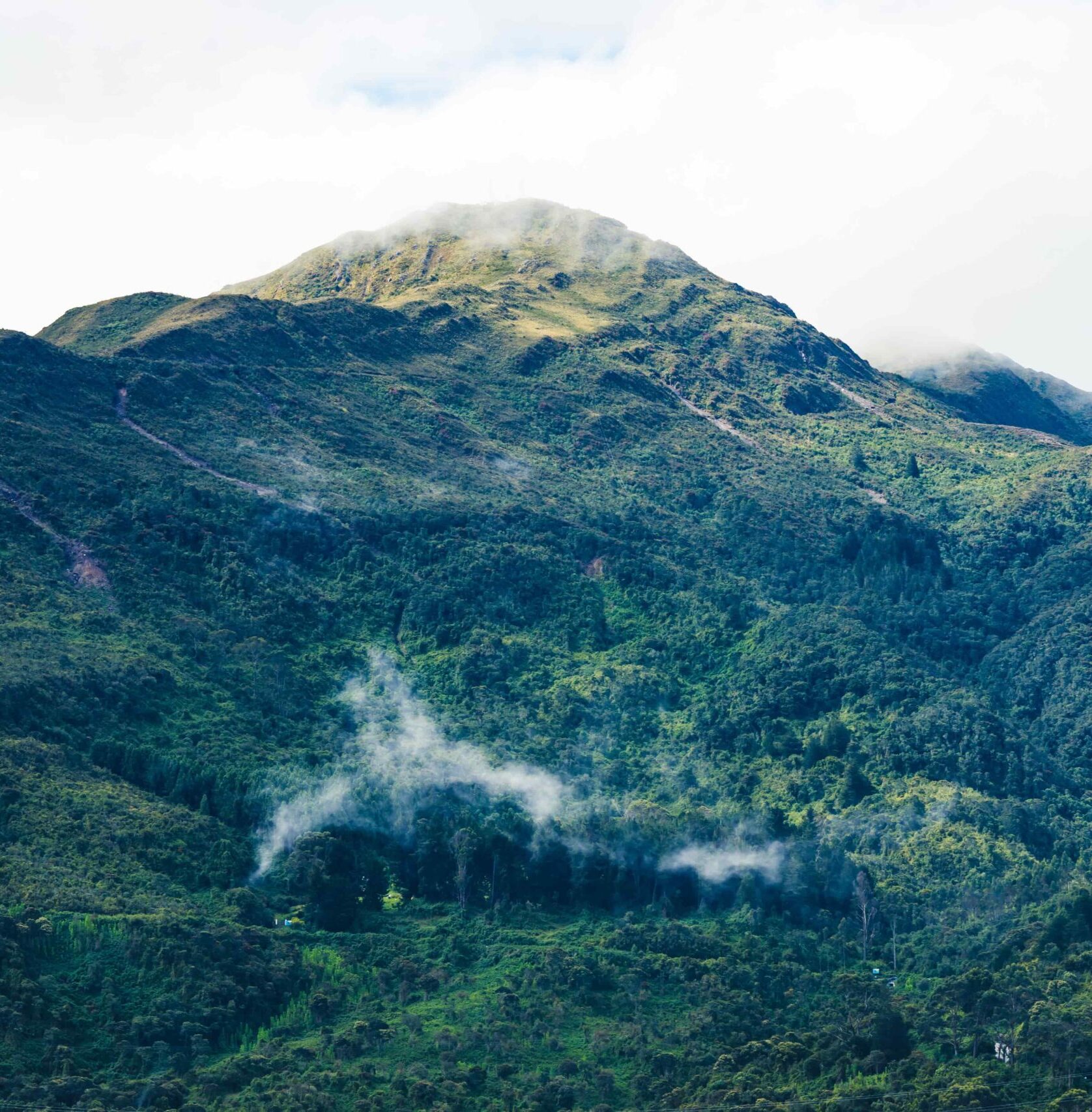
Monserrate
Monserrate is a 10,000-foot-high mountain that dominates the city center of Bogotá, Colombia’s capital city. There is a church with a shrine dedicated to El Seor Cado on the mountain. You can find a few shops and restaurants on top and Monserrate can be reached via aerial tramway, funicular, or climbing, which is the favored method of pilgrims. The Mountain was originally regarded sacred in pre-Columbian times when the area was inhabited by the indigenous Muisca. All of downtown Bogotá, south Bogotá, and parts of the city’s north are visible from here, making it a popular place to view the sunset over the city. Every year, Monserrate and its neighbor Guadalupe draw a large number of visitors.
Ciudad Perdida
Ciudad Perdida is an archaeological site in Colombia’s Sierra Nevada of Santa Marta. It is thought to have been founded in 800 CE, some 650 years before Machu Picchu. This area is also referred to as “Teyuna” and “Buritaca 200.” Ciudad Perdida is made up of 169 cut into the mountainside terraces, a network of tiled roads, and numerous tiny circular plazas. The entrance is only accessible by climbing 1,200 stone stairs through deep vegetation.


Tierradentro
Tierradentro is one of Colombia’s pre-Columbian civilizations. It flourished in the highlands of southwest Colombia circa 200 BC and lasted until the 17th century. Tierradentro civilization is well-known for its extensive collection of exquisite pre-Columbian hypogea. Hypogea has been discovered in a number of excavations around the region. Traditional hypogeum features a main room 5 to 8 meters below the surface, with numerous smaller chambers around it, each housing a body.
Castillo de San Felipe de Barajas
The Castillo San Felipe de Barajas is a fortification in the Colombian city of Cartagena. The castle is strategically placed on the Hill of San Lázaro, controlling entrances to the city by land or sea. During the colonial era, the Spanish erected it. It was built in 1536 and was originally known as the Castillo de San Lázaro. It was enlarged in 1657.


Caño Cristales
Caño Cristales is a Colombian river that flows in Meta’s Serrania de la Macarena province and is a source of the Guayabero River. The river is known as the “River of Five Hues” or the “Liquid Rainbow” because of its vibrant colors. From the end of July to the end of November, the riverbank is colored yellow, green, blue, black, and mainly red, which is caused by Macarenia clavigera plants on the riverbed.
8-day Itinerary in Colombia
Day 1
Arrive in Bogota
Bogota, Colombia’s capital and largest city, is by far the most affordable choice, especially if coming in from the United States—hence, the first stop on your Colombian tour. When you arrive and dump your stuff in your preferred neighborhood!
Bogota boasts a plethora of fantastic neighborhoods. Check with the locals for personalized neighborhood suggestions, although the Candelaria area is hip, central, and full of things to do and is the best place to start being acquainted with coffee and food. Explore the area like a local! Grab a morning arepa with tinto (a popular Colombian style coffee). Arepas can be packed with eggs, cheese, and other ingredients.


La Candelaria, Bogota’s oldest neighborhood, is a fascinating destination to visit. Locals recommend meandering down Calle del Embudo’s cobblestones to take in the neighborhood’s colorful houses, Spanish colonial architecture, and bright street art. Visit Boliver Square (Bogota’s main square) to enjoy breathtaking views of La Catedral Primada and Liévano Palace, as well as to appreciate the city’s vibrant street culture.
Then spice up your day, look for street carts and cafés serving empanadas, arepas, and tamales. Bogota is quickly becoming a gourmet destination, so you’ll have lots of good options. For lunch, get a bowl of ajiaco, which is comprised of chicken, potatoes, and guascas (an herb which tastes like oregano)
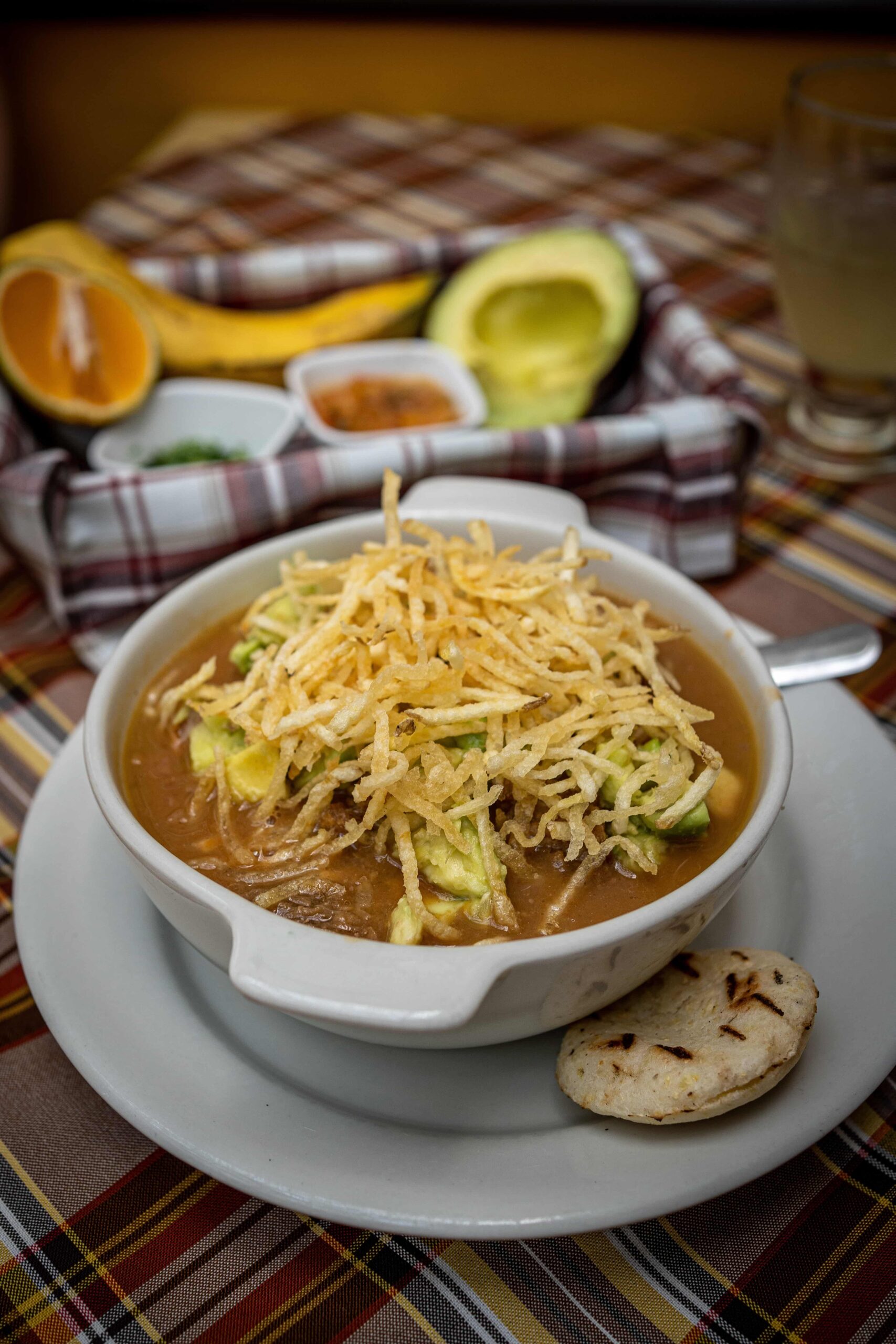
Catch the cable car at the base of Monserrate (the mountain above Bogota) before nightfall for a spectacular sunset. The journey up the mountain is exciting, but nothing compares to the breathtaking view once at the summit. You can definitely climb up but keep in mind that it takes about 4 hours to reach the top, as for going back down, definitely take the cable car. The cable car costs $7 USD, but it is just $4 on Sundays.
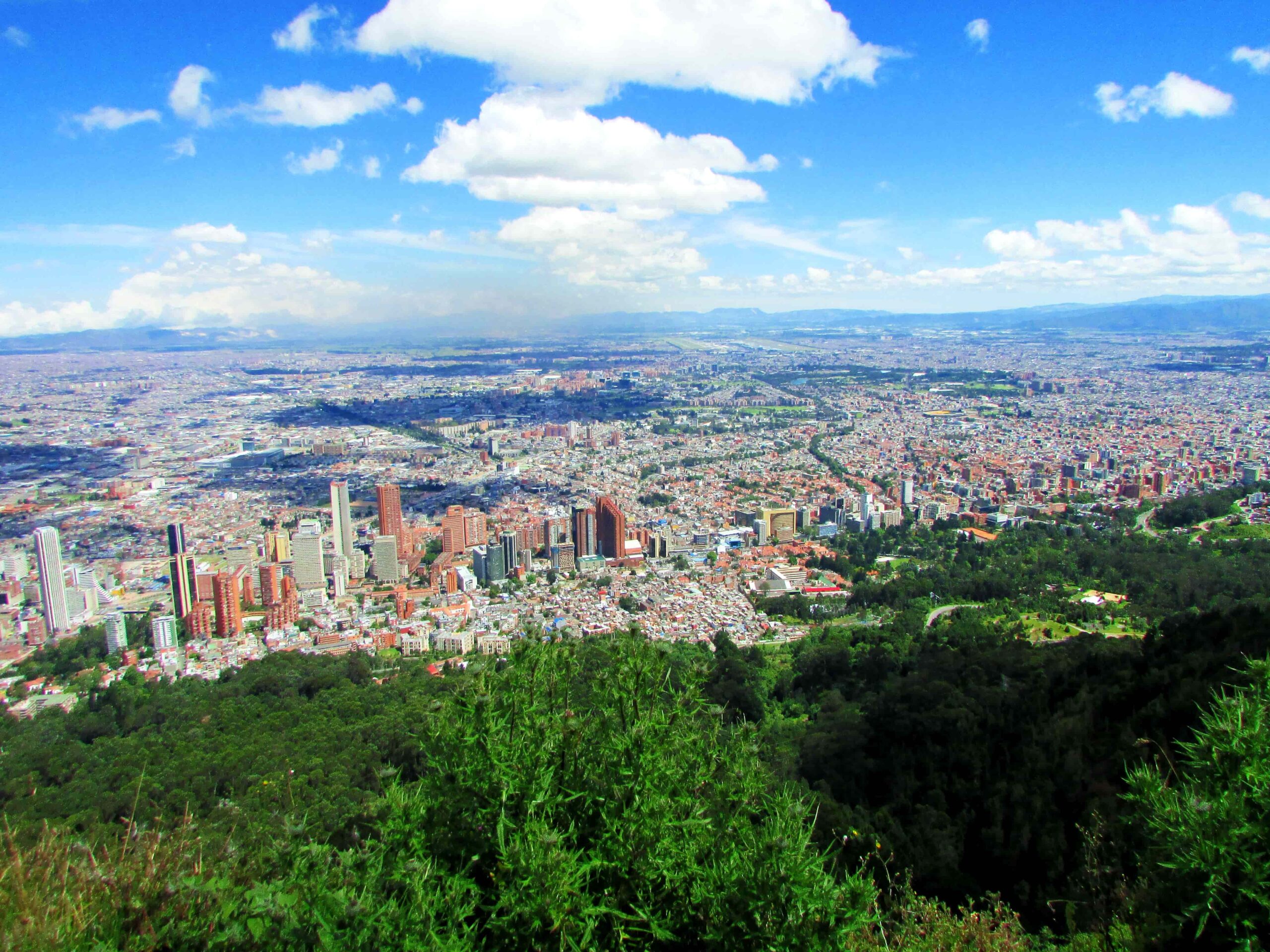
- Backpacker:
- Budget:
- Mid-range:
- Luxury:
When it becomes dark, a foreign city may be twice as dangerous - especially if you don't understand the language and are unfamiliar with the area. There is reason to be alarmed about walking home alone in the dark - there is enough crime recorded in Bogota to warrant anxiety. So always take taxis at night and never leave crowded areas to unlit alleys or streets.
This section will be added shortly. Refer to the transportation block in the top section.
Day 2
Exploring more of Bogota
Start your day with a classic Colombian breakfast of chocolate with queso or anything else you prefer then head to The Gold Museum, which has everything that shines. El Museo del Oro in Bogota displays a stunning collection of 30,000 gold items (the largest collection of pre-Columbian relics in the world). The museum is enjoyable, educational, and simple to skim and is also free on sundays.
At lunch time, have a bite wherever you want in Chapinero. Spend the afternoon savoring Colombian culture, particularly the local flavor, after spending the morning steeped in Colombian history. Then next up, you will explore the vibrant marketplaces of Bogota.
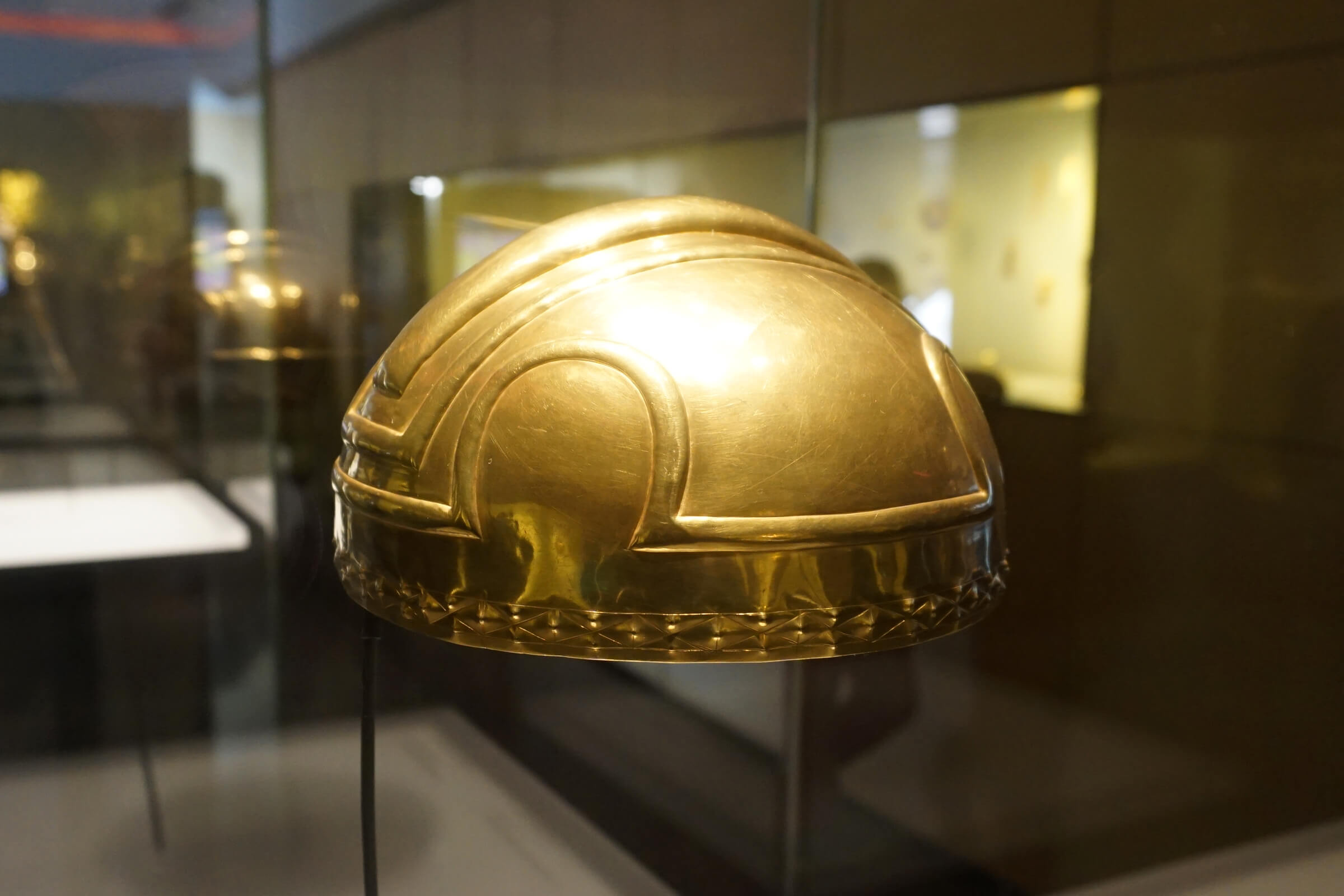

The Plaza de Mercado de Paloquemao, Bogota’s major food market, is packed with sellers offering everything from fresh fruit and vegetables to flowers and local cheese! With so many stalls, traversing the market might be difficult, but you can always ask around.
Head to Zona T afterwards, sometimes known as Zona Rosa, Bogota’s prime party zone, with several fantastic eateries. Grab supper at Andres Carne de Res, where bizarre musicians perform tableside as you dine, for a crazy start to the night. Zona T is a particular favorite for people who enjoy live DJs and dancing of course.



Day 3
Day Trips and Night Fun
Bogota is fantastic, but at some point, you’ve got to leave the city to properly appreciate Colombia’s attractions. So right after breakfast, start your tour by visiting a coffee plantation.
Colombian coffee is delicious, and visiting coffee fields near Bogota is an excellent opportunity to learn about the process. You can choose between small, family-run farms and larger ones. If you prefer to explore on your own, ask your hosts or hotel for instructions, but we recommend getting a tour or a private driver. Go to Tibacuy, a fantastic farm to visit, around 2.5 hours from Bogota.
Alternatively, visit Chicaque Natural Park, which is just outside of Bogota and has sloths hanging from tree branches, or Chingaza National Park, which has mountain lakes and hiking routes. If you’re lucky, you could even encounter a spectacular Andean condor or a spectacled bear in Chingaza!

If you wish to visit Chingaza National Park, a request form must be completed at least 15 days before your arrival. Alternatively, The Salt Cathedral of Zipaquira is less than an hour’s drive from Bogota and is an architectural marvel built out of salt and stone 500 feet below earth in a working salt mine!
When you’re done with your day trip, head back to your last night in Bogota for a game of tejo, it involves throwing a metal puck towards gunpowder-filled targets. Tejo De La 76 is one of Bogota’s most well-known tejo bars, but you can venture off, ask locals, and find your own tejo bar.
Next up on your Colombia trip plan, you will be heading to Medellin and there are a few options to choose from depending on how you like to roll while traveling.
From Bogota to Medellin, the option is yours! The bus travel takes roughly 8 hours, whereas the flight takes about an hour (plus of course 3 hours for checking your luggage, boarding, and landing).
Day 4
Off to Medellin
The City of Eternal Spring, Medellin, Colombia’s cultural and educational hub. Unlike Bogota, Medellin is a more unified city with fewer separate districts. El Poblado is a favorite destination for most tourists.
Medellin’s metro is wonderful, spacious, and spotless. The famed metro is great for quick transits from one attraction to another. Uber no longer operates in Colombia; yet, the firm returned less than a month later with new regulations. Essentially, you can rent a car with a driver, which isn’t a bad alternative.


Head to Botero Plaza, located in the heart of Medellin, with 23 sculptures by Colombian artist Fernando Botero. Locals recommend visiting the wonderful Museo de Antioquia to view more of Botero’s great work if you enjoy seeing the Botero statues. After running around the magnificent artwork and creativity, you will likely get hungry and we recommend you get Bandeja Paisa, a fantastic dish for someone who is starving. Hacienda, near Botero Plaza, and Mondogo’s are great spots to try the national delicacy.
Next up, head to Parque Explora in Medellin, an interactive exhibit showcasing Colombia’s unique flora and animals. It even has South America’s largest freshwater aquarium!

- Backpacker:
- Budget:
- Mid-range:
- Luxury:
When it becomes dark, a foreign city may be twice as dangerous - especially if you don't understand the language and are unfamiliar with the area. There is reason to be alarmed about walking home alone in the dark - there is less crime recorded in Medellin but it's best to remain vigilant and take precautions. So always take taxis at night and never leave crowded areas to unlit alleys or streets.
This section will be added shortly. Refer to the transportation block in the top section.
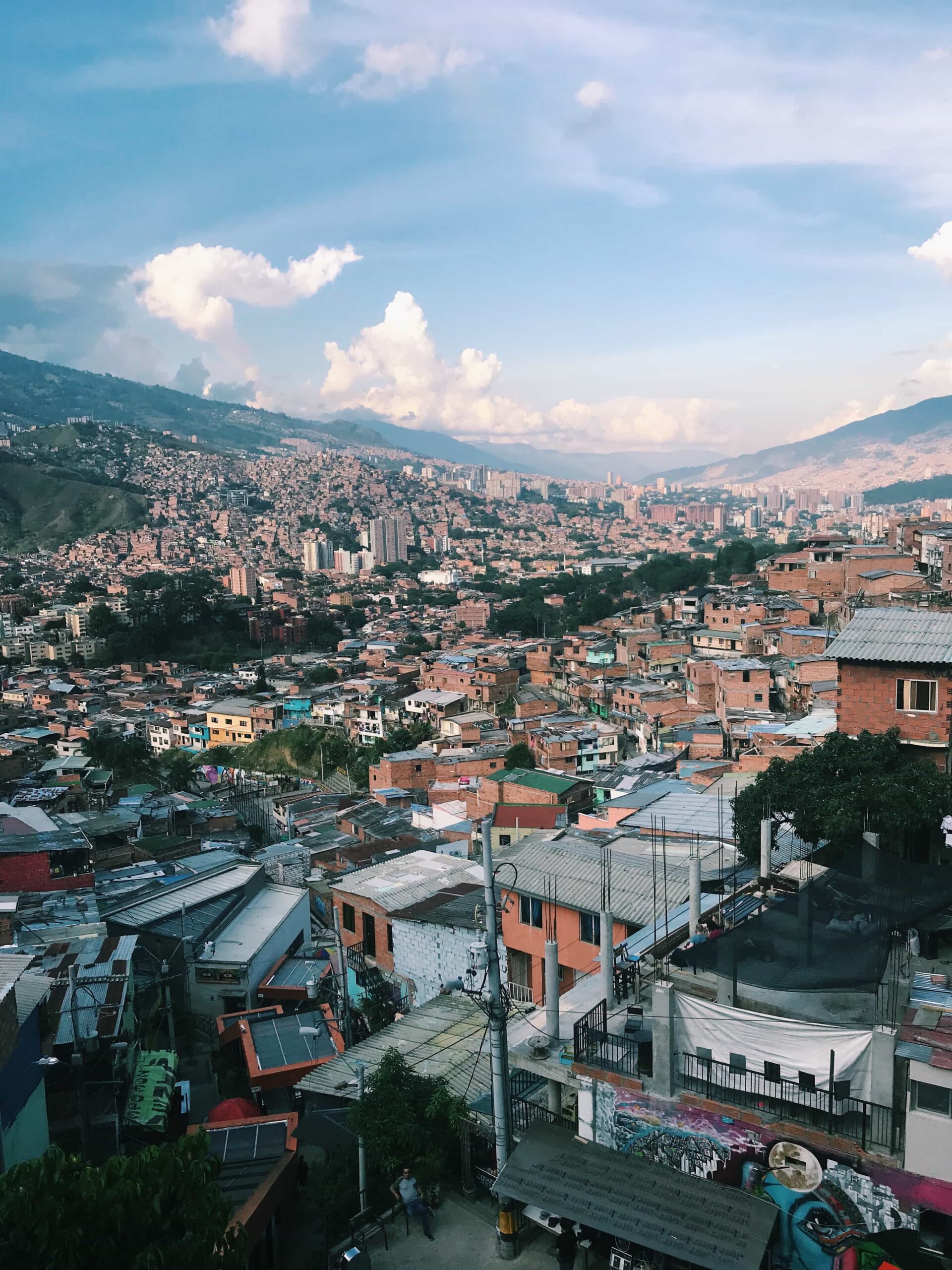
Day 5
Explore more of Medellin
Discover Medellin’s lesser-known districts, now a tranquil residential area and university students after years of struggle with drug lords. Stop by Comuna 13 to witness Medellin’s resurgence in action. Comuna 13, formerly the city’s most violent district, has evolved into a dynamic attraction for both locals and visitors.
Next, visit El Hueco, a shopper’s paradise where you can purchase anything from clothes to food to power tools! Check out one of Medellin’s amazing restaurants, such as Carmen, or discover what people are saying about the city’s newest fashionable eateries.
Reggaeton is popular in Colombia, particularly in Medellin. Spend the last night of your trip in Medellin at a reggaeton club! Parque Lleras and discover a terrific genre-specific club or a popular favorite like the famous Discoteca Luxury.
Day 6
Head to Cartagena
Cartagena, located on Colombia’s Caribbean coast, is a vibrant blend of history, culture, and beach life, and nothing beats taking a stroll through the Old City. The restored Old Town of Cartagena is a work of art of 17th and 18th-century architecture. Locals like the cobblestone alleys and flower-covered terraces, the outdoor cafés humming gently in the shade of Spanish façade, and, of course, the vibrant colors. And you don’t miss out on seeing Cartagena’s gorgeous city walls!
Have a quick hearty snack of Fritanga, one of Cartagena’s most famous finger foods, is simply a tray of fried chorizo, chicharron, potato, and plantain. You can also grab some fresh pandebono. This crispy nibble is a popular cheese bread that is definitely worth purchasing fresh. Not to mention that, tropical fruit drinks are offered fresh on every street corner.
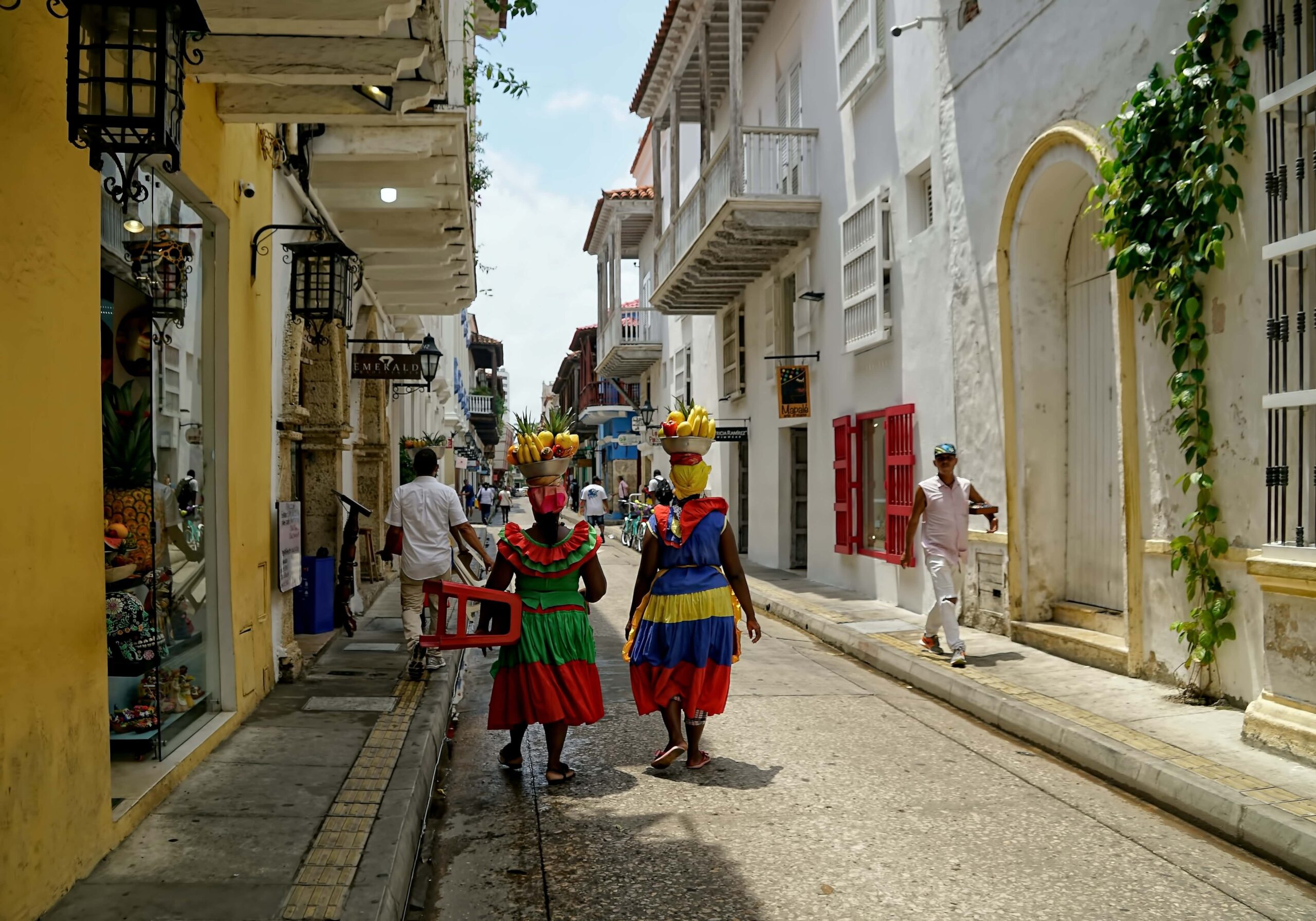
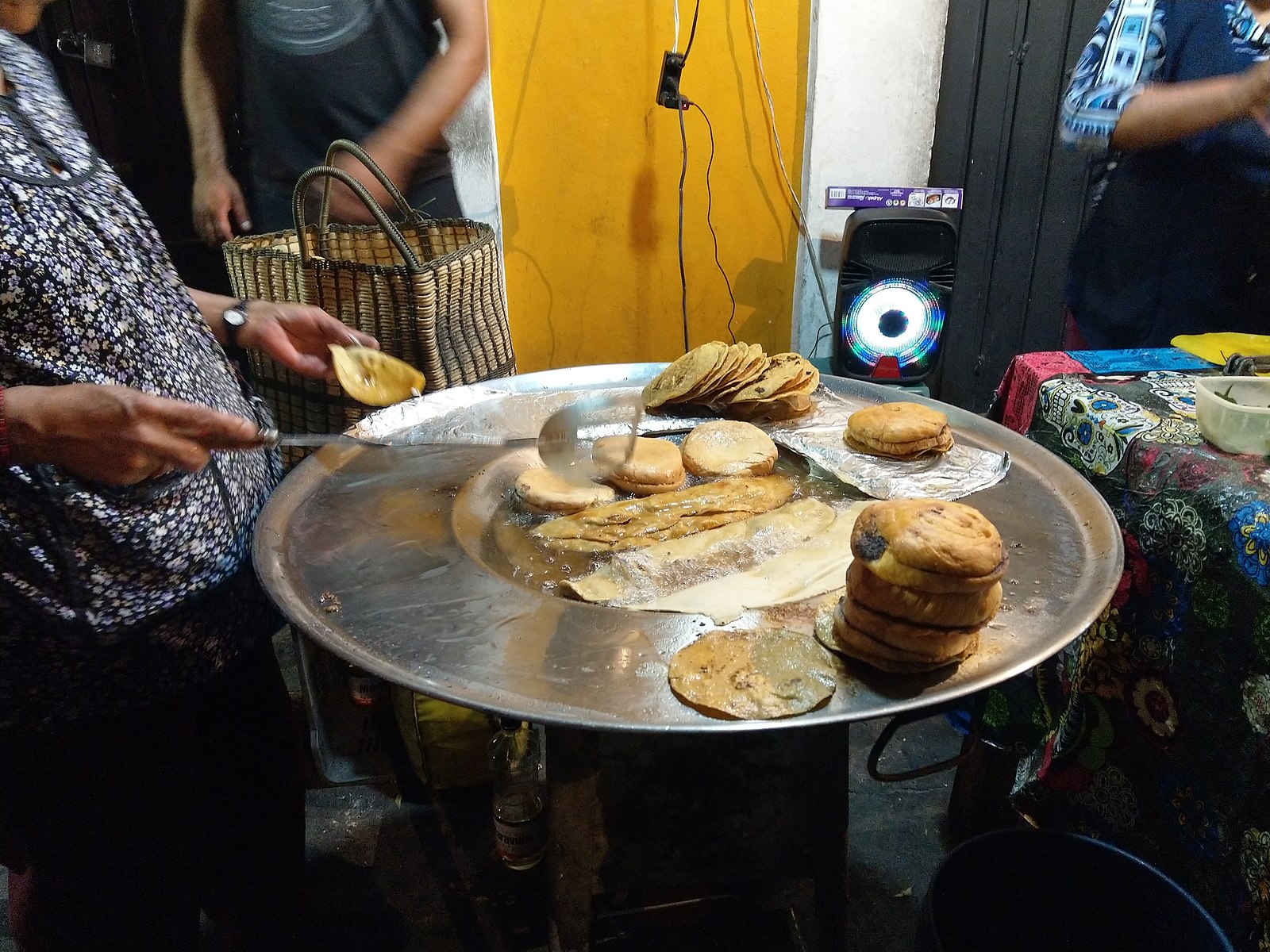
Cartagena’s calm vibe is ideal for anyone searching for amazing and low-key nightlife. Begin the night in Getsemani, one of the city’s hippest areas. Get a cold drink and head to a salsa bar! Cafe Havana is a fantastic recommendation for its lively atmosphere.

- Backpacker:
- Budget:
- Mid-range:
- Luxury:
When it becomes dark, a foreign city may be twice as dangerous - especially if you don't understand the language and are unfamiliar with the area. There is little reason to be alarmed about walking home alone in the dark - there is less crime recorded in Cartagena but it's best to remain vigilant and take precautions. So always take taxis at night and never leave crowded areas to unlit alleys or streets.
This section will be added shortly. Refer to the transportation block in the top section.

Day 7
Relájate en La Playa
Spend your last day with beaches and islands. Visit the adjacent islands, which will add a significant amount of serenity to your trip to Cartagena, a well-deserved treat after all of your exploration in Colombia.
Also, check the famed Rosario Islands or somewhere more off the beaten path, you let us know what you did, and always stay safe.
Day 8
Adios Colombia
After a lovely week in Colombia, it’s time to say goodbye. You can take the airport from Cartagena to whichever location you’re going to or head back to Bogota where all the international flights come and go. Prices may vary greatly if you choose to go back to the capital where costs can be much lower.

The Most Popular Food in Colombia
Colombian cuisine varies according to region and is highly influenced by Indigenous Colombian, Spanish, and African cuisines, with a small Arab influence in some parts. Colombian cuisine shares many dishes with its neighbors, although each dish has its own distinct flavor. Although the titles may sound familiar, expect somewhat different tastes and cooking approaches.

Bandeja Paisa
Bandeja Paisa’s, a national dish with ingredients consisting of rice, beans, fried plantain, arepa, fried egg, chorizo, and chicharron topped with a piece of avocado in this popular dish. Although it is high in fat, it is also incredibly tasty and satisfying. The bandeja paisa, which reigns in the Antioquia area (where Medelln is located and where locals are referred to as paisas), is a feast not for the faint of heart.

Sancocho de Gallina
Sancocho is one of Colombia’s most popular foods and has been nominated as a national dish on several occasions, typically offered on Sundays. It’s a soup made with potatoes or yucca and some meat (for example, chicken, fish, beef, etc.). The most popular is made with chicken, but there is also a triphasic sancocho made with pork, beef, and chicken.

Empanadas
Empanadas, which were brought from Spain, have been around since colonial times, and no, they are not similar to Mexican empanadas. The contents vary by location, but the dough is always baked with either maize or wheat flour. Every area, however, has its unique empanada, with contents ranging from mashed potatoes to ground meat. They make a good snack, especially on long flights.
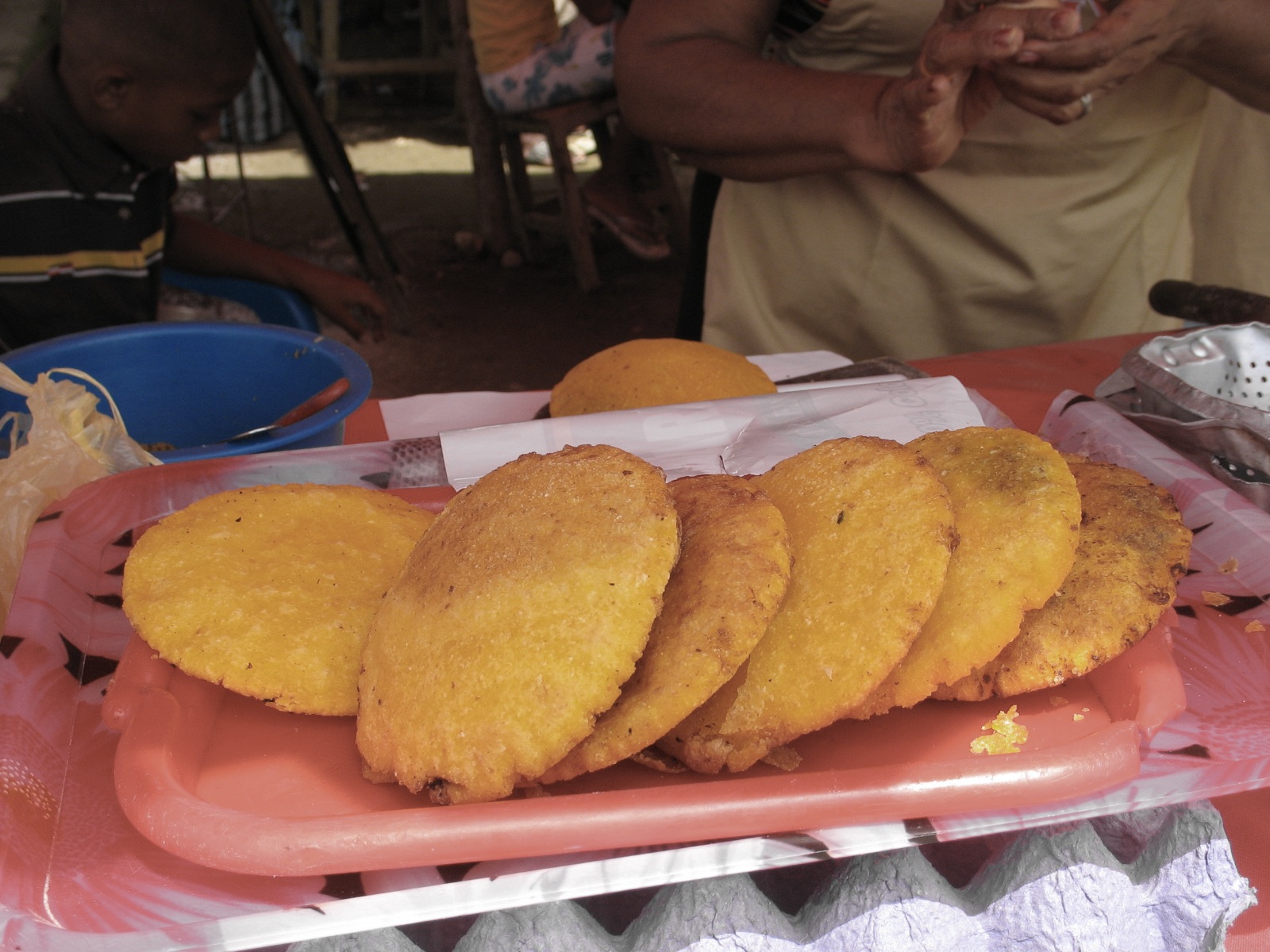
Arepas
There are around 30 different fillings of arepas, but they all have a round, flat form and, of course, corn dough. Nothing says, Colombia like arepas, found in every region of Colombia, having been passed down from indigenous pre-Columbian ancestors. The type of maize utilized varies according to area, as do the color and taste. They can be served as a main course, a side dish, an appetizer, or even a snack and many natives make it at home. The majority of arepas are grilled, however some can also be deep-fried, pan-fried, or baked.

Cocadas
Coconut is a common ingredient in the Colombian coastal diet, and the most famous dessert created with it is cocadas. Grated coconut is combined with melted sugar to make a paste, which is then divided, formed into circles, and dried, periodically baking. Cocadas are popular along the Caribbean coast, where they are often served on the street and at the beach by people carrying a huge pot over their heads. Milk, fruit syrups, raisins, peanuts, and even liquor can be included in the sugar and coconut mixture, offering a variety of options for those who prefer sweet sweets.
What's the Travel Budget for Colombia?
Flights
- Flights start at roughly $130 from nearby countries. Tickets however on average cost around $550 and can cost way more depending on which class and from which country you depart from.
Accommodation
- Nomad Backpacking style travelers can expect to spend around $120 for a week
- Budget travelers can expect to spend around $200 for a week
- Mid-range travelers can expect to spend around $400 for a week
- Luxury travelers can expect to spend around $900 for a week
Food Budget (Three meals and drinks)
- Nomad Backpacking style travelers can expect to spend around $10 per person per day
- Budget travelers can expect to pay around $16 per person per day
- Mid-range travelers on average would cost $20 to $30 per person per day
- Luxury travelers can expect to pay around $35 to $45 per person per day
Overall Budget Styles (Not including Flights, Tours, Transportation, or Car Rental)
- Nomad Backpacking style travelers can expect to spend roughly $210 for a week
- Budget travelers can expect to spend close to $350 for one person for a week
- Mid-range travelers can expect to spend approximately $640 for one person for a week
- Luxury travelers can expect to spend around $1,250 for one person for a week
Flights
- Flights start at roughly $130 from nearby countries. Tickets however on average cost around $550 and can cost way more depending on which class and from which country you depart from.
Accommodation
- Nomad Backpacking style travelers can expect to spend around $120 for a week
- Budget travelers can expect to spend around $200 for a week
- Mid-range travelers can expect to spend around $400 for a week
- Luxury travelers can expect to spend around $900 for a week
Food Budget (Three meals and drinks)
- Nomad Backpacking style travelers can expect to spend around $10 per person per day
- Budget travelers can expect to pay around $16 per person per day
- Mid-range travelers on average would cost $20 to $30 per person per day
- Luxury travelers can expect to pay around $35 to $45 per person per day
Overall Budget Styles (Not including Flights, Tours, Transportation, or Car Rental)
- Nomad Backpacking style travelers can expect to spend roughly $210 for a week
- Budget travelers can expect to spend close to $350 for one person for a week
- Mid-range travelers can expect to spend approximately $640 for one person for a week
- Luxury travelers can expect to spend around $1,250 for one person for a week
Flights
- Flights start at roughly $130 from nearby countries. Tickets however on average cost around $550 and can cost way more depending on which class and from which country you depart from.
Accommodation
- Nomad Backpacking style travelers can expect to spend around $120 for a week
- Budget travelers can expect to spend around $200 for a week
- Mid-range travelers can expect to spend around $400 for a week
- Luxury travelers can expect to spend around $900 for a week
Food Budget (Three meals and drinks)
- Nomad Backpacking style travelers can expect to spend around $10 per person per day
- Budget travelers can expect to pay around $16 per person per day
- Mid-range travelers on average would cost $20 to $30 per person per day
- Luxury travelers can expect to pay around $35 to $45 per person per day
Overall Budget Styles (Not including Flights, Tours, Transportation, or Car Rental)
- Nomad Backpacking style travelers can expect to spend roughly $210 for a week
- Budget travelers can expect to spend close to $350 for one person for a week
- Mid-range travelers can expect to spend approximately $640 for one person for a week
- Luxury travelers can expect to spend around $1,250 for one person for a week
Flights
- Flights start at roughly $130 from nearby countries. Tickets however on average cost around $550 and can cost way more depending on which class and from which country you depart from.
Accommodation
- Nomad Backpacking style travelers can expect to spend around $120 for a week
- Budget travelers can expect to spend around $200 for a week
- Mid-range travelers can expect to spend around $400 for a week
- Luxury travelers can expect to spend around $900 for a week
Food Budget (Three meals and drinks)
- Nomad Backpacking style travelers can expect to spend around $10 per person per day
- Budget travelers can expect to pay around $16 per person per day
- Mid-range travelers on average would cost $20 to $30 per person per day
- Luxury travelers can expect to pay around $35 to $45 per person per day
Overall Budget Styles (Not including Flights, Tours, Transportation, or Car Rental)
- Nomad Backpacking style travelers can expect to spend roughly $210 for a week
- Budget travelers can expect to spend close to $350 for one person for a week
- Mid-range travelers can expect to spend approximately $640 for one person for a week
- Luxury travelers can expect to spend around $1,250 for one person for a week
If you want to know what to pack, read this list below:
- This is a casual tropical country that can get extremely hot or too rainy and windy, dress accordingly
- Raincoat or Light Waterproof Jacket
- Hiking Boots or Sturdy Sneakers (Shoes You Don’t Mind Getting Wet)
- Sunscreen
- Insect Protection – Repellent and Clothing
- Sunglasses and Sun Hat
- Water Shoes
- Beach Towels/Sarong
- Dry Bag
- Money Belt or Cross Bag
- Portable Medical Kit
- Flashlight or Headlamp
- Copies of your passport.
- Get all the needed vaccinations before traveling
- A power bank is a must in any travel.
- Always have some cash with you just in case there are no ATMs and if you are dealing with a business that solely accepts cash
- Get yourself an adapter for your gadgets
- 1 toothbrush
- 1 tube of toothpaste
- 1 razor
- 1 package of dental floss
- 1 small bottle of shampoo
- 1 small bottle of shower gel
- 1 towel
- Deodorant
- Band-Aids
- Hydrocortisone cream
- Antibacterial cream
- Earplugs
- Tylenol
- Hand sanitizer (germs = sick = bad holiday)
- A key or combination lock
- Zip-lock bags
- Plastic bags (great for laundry)
- Universal charger/adaptor
- LifeStraw (A water bottle with a purifier)
- 1 dry shampoo spray & talc powder
- 1 hairbrush
- Makeup you use
- Hairbands & hair clips
- Feminine hygiene products
Clothing For Boys
- 1 pair of jeans or khaki pants
- 1 pair of shorts
- 1 bathing suit
- 5 T-shirts
- 1 long-sleeved T-shirt
- 1 pair of flip-flops
- 1 pair of sneakers
- 6 pairs of socks
- 5 pairs of boxer shorts
Clothing For Girls
- 1 swimsuit
- 1 sarong
- 1 pair of stretchy jeans
- 1 pair of leggings
- 2-3 long-sleeve tops
- 2-3 T-shirts
- 3-4 spaghetti tops
- 1 light cardigan
Want to plan your own trip, here are some of the best resources that can help you
- Skyscanner – They search small websites and budget airlines that larger search sites tend to miss. They are hands down the number one place to start.
- Momondo – This is another favorite flight search engine because they search such a wide variety of sites and airlines. Always check here too.
- Booking.com – The best all-around booking site that constantly provides the most affordable and lowest rates. They have the widest selection of budget accommodation.
- Couchsurfing – This website allows you to stay on people’s couches or spare rooms for free. It’s a great way to save money while meeting locals who can tell you the ins and outs of their city. The site also lists events you can attend to meet people (even if you’re not staying with someone).
- Intrepid Travel – If you want to do group tours, go with Intrepid. They offer good small group tours that use local operators and leave a small environmental footprint.
- Grassroots Volunteering – For volunteering, Grassroots Volunteering compiles a list of good local volunteer organizations that keep the money within the community.
- Get Your Guide – Get Your Guide is a huge online marketplace for tours and excursions. They have tons of tour options available in cities all around the world, including everything from cooking classes, walking tours, street art lessons, and more! It has the world’s largest collection of things to do with more than 30,000 activities in 7500 destinations.
- SafetyWing – Safety Wing offers convenient and affordable plans tailored to digital nomads and long-term travelers. They have cheap monthly plans, great customer service, and an easy-to-use claims process that makes it perfect for those on the road.
- Trip Advisor: Check the reviews and then book your accommodation. TripAdvisor is where you go when you want to compare prices with multiple accommodation providers.
- VRBO: is the main search engine to use when you are looking for a home or apartment rental. It can sometimes be cheaper than hotels and it is the best way to stay in areas that offer a more local feel.
- Hostelworld: With one of the largest databases of hostels in the world, Hostelworld is the go-to site when you are looking for budget accommodation.
- Rome 2 Rio: If you want to see how to get somewhere by plane, train, bus, ferry, or car Rome2Rio lays it all out for you as well as related costs.
- World Nomads Insurance: When traveling you should always have travel insurance. We have found the best bang for your buck is by far World Nomads.
Final Thoughts on Colombia
Colombia has a sophisticated and rich heritage that can be seen across the nation dating back to 9,790 BC, with its old constructions left by its various aboriginal people, colonial history, spectacular and distinct landmarks, amazing hospitality, thrilling festivals and dances, and a breathtaking environment. A terrific alternative for anybody looking for a nice place to visit in South America. Colombia is stunningly lovely, with magnificent national treasures, fauna, and breathtaking landscape. Would you travel to Colombia?
Have you ever visited Colombia? Please leave your opinions in the space below.